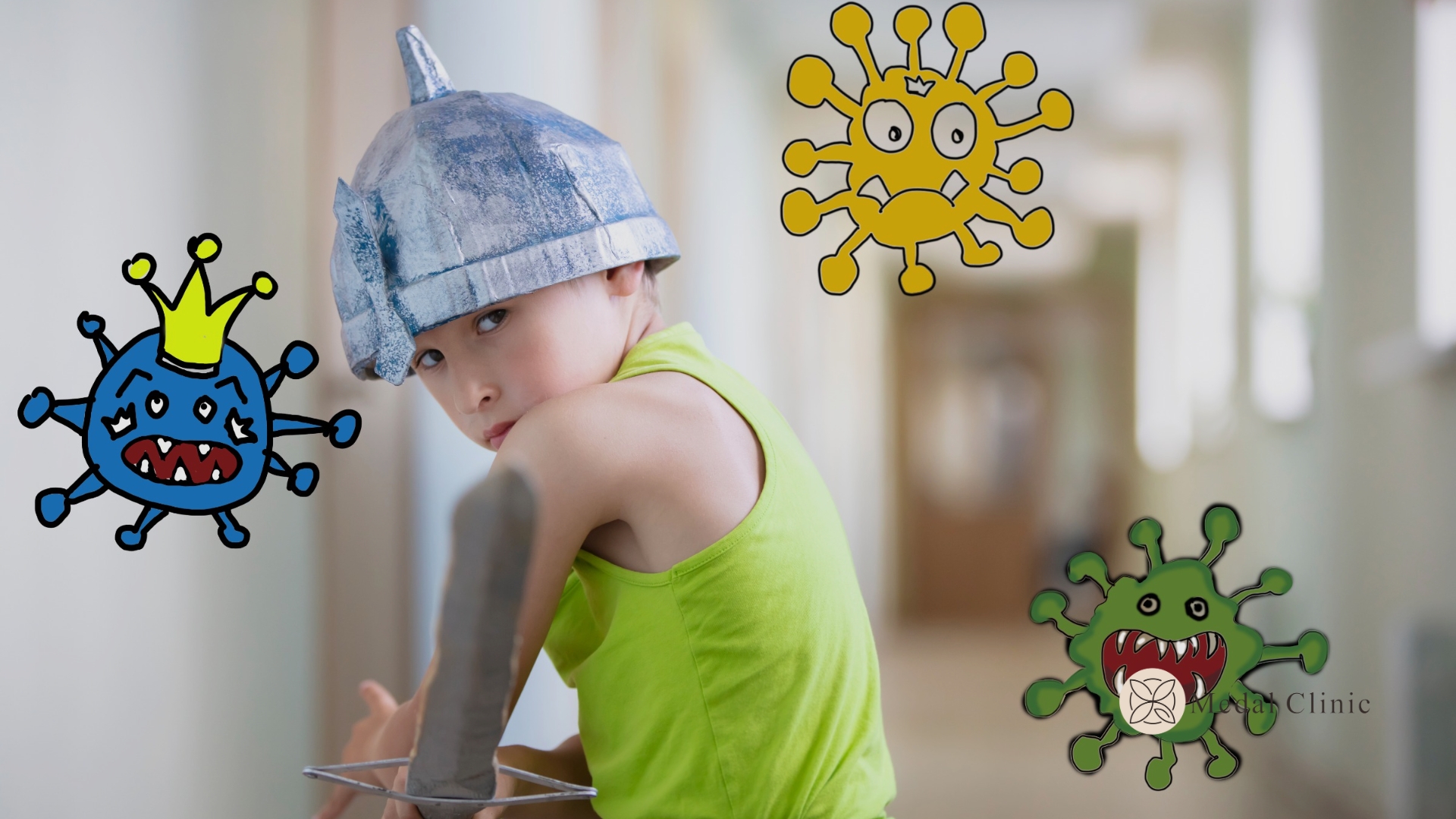The Unseen Battle: Childhood Infectious Diseases and Their Impact on Children's Health
Unveiling the Threats of Childhood Infectious Diseases
Childhood is a magical phase filled with laughter, playfulness, and boundless curiosity. Yet, amid the innocence, children are vulnerable to a range of infectious diseases that can pose significant health risks. Childhood infectious diseases encompass a wide array of illnesses caused by bacteria, viruses, parasites, and fungi, which can spread easily from child to child. In this comprehensive guide, we delve into the world of childhood infectious diseases, shedding light on their impact, symptoms, prevention strategies, and treatment options.
Understanding the Landscape of Childhood Infectious Diseases
1- Measles: The Outbreak Menace
- Measles, a highly contagious viral infection, can result in severe complications such as pneumonia, encephalitis, and even death.
- Symptoms include high fever, rash, cough, runny nose, and red, watery eyes.
- Vaccination is crucial in preventing measles, with the MMR (measles, mumps, and rubella) vaccine offering effective protection.
2- Chickenpox: The Prickly Predicament
- Varicella-zoster virus causes chickenpox, characterized by an itchy rash with blister-like lesions.
- Fever, headache, and fatigue often accompany the rash.
- Immunization through the varicella vaccine is highly recommended for preventing chickenpox.
3- Whooping Cough: The Distressing Cough
- Pertussis, commonly known as whooping cough, is a bacterial infection that affects the respiratory system.
- Intense coughing spells, whooping sounds, and difficulty breathing are hallmarks of this disease.
- Vaccination is vital for both children and adults to prevent the transmission of whooping cough.
4- Rotavirus: The Gastrointestinal Intruder
- Rotavirus is the leading cause of severe diarrhea in young children, leading to dehydration and hospitalization in severe cases.
- Vomiting, fever, and abdominal pain are common symptoms.
- Vaccination with the rotavirus vaccine is recommended to protect against this highly contagious virus.
5- Mumps: The Swollen Threat
- Mumps is a viral infection that causes swelling of the salivary glands, leading to swollen cheeks and jaw.
- Fever, headache, muscle aches, and fatigue often accompany the swelling.
- Vaccination with the MMR vaccine is essential to prevent mumps.
Safeguarding Our Little Warriors from Childhood Infectious Diseases
Childhood infectious diseases present a significant challenge to the well-being of our little ones. To protect their health, it is imperative that we take proactive measures. By ensuring proper vaccination, practicing good hygiene, and promoting awareness within our communities, we can create a shield of protection against these diseases.
Regular immunizations play a crucial role in preventing the onset and spread of childhood infectious diseases. Vaccines like MMR, varicella, and rotavirus have proven to be highly effective in reducing the incidence and severity of these illnesses. By adhering to the recommended immunization schedule, we can provide our children with a robust defense system against these infectious threats.
In addition to vaccinations, practicing good hygiene is paramount. Encouraging regular handwashing with soap and water, teaching children to cover their mouths when coughing or sneezing, and avoiding close contact with individuals who are sick are essential preventive measures. By instilling these habits from an early age, we can empower our children to take responsibility for their own health.
Community awareness and education also play a vital role in the fight against childhood infectious diseases. By disseminating accurate information about symptoms, prevention strategies, and the importance of immunization, we can create a collective effort to safeguard the well-being of our children. Engaging with healthcare professionals, participating in vaccination campaigns, and supporting research and development for new vaccines are all crucial steps in strengthening our defense against these diseases.
Moreover, it is essential to address misconceptions and myths surrounding childhood infectious diseases. The spread of false information can hinder vaccination efforts and put children at risk. By providing accurate, evidence-based information and debunking common myths, we can build trust and confidence in immunization programs.
While vaccines and preventive measures are essential, it is also crucial to seek prompt medical attention if a child exhibits symptoms of a childhood infectious disease. Early diagnosis and treatment can help manage the illness effectively and prevent complications. Consulting with healthcare professionals, following their guidance, and completing the prescribed treatment are vital steps in ensuring a speedy recovery.
In conclusion, childhood infectious diseases pose a significant threat to the health and well-being of our little ones. However, by staying informed, taking preventive measures, and promoting vaccination, we can protect our children from these invisible foes. Let us join hands in the battle against childhood infectious diseases and create a safer, healthier future for our little warriors. Together, we can make a difference and ensure that their childhood remains filled with joy, laughter, and good health.
Remember, prevention is the key, and knowledge is our shield. Stay vigilant, stay informed, and let’s conquer the challenges posed by childhood infectious diseases!
FAQ's
How are childhood infectious diseases transmitted?
Childhood infectious diseases can spread through various routes, including direct contact with infected individuals, respiratory droplets, contaminated food or water, and insect bites.
Are there any natural remedies to treat childhood infectious diseases?
While some home remedies may provide relief from symptoms, it is crucial to consult a healthcare professional for appropriate medical treatment. Vaccination is the most effective preventive measure.
Can childhood infectious diseases have long-term consequences?
Yes, some childhood infectious diseases can lead to long-term complications, such as hearing loss (resulting from measles) or chronic respiratory problems (as seen in severe cases of whooping cough).




